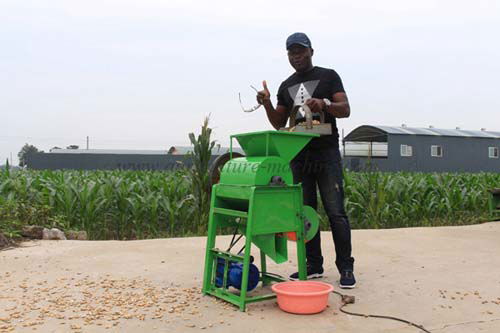Peanut sheller considerations
Precautions for peanut sheller when peeling:
1. Before the feed is started, the telescopic hopper should be closed. After the hopper is filled with peanuts, the gate will be slowly opened, and the gate of the Export will be closed. The peanut kernels and the small fruit will be laid on the sieve surface of the specific gravity sieve. When a layer of material is about 20~30mm thick, the stopper gate is slowly opened, so that the peanut kernel can flow smoothly and the small fruit does not flow out. During the production process, the stopper gate should be adjusted to the appropriate position, otherwise, the damage rate will be increased and the cleanliness will be reduced.

2. In the process of using the right, if the door of the mouth is opened, the peanut kernel cannot be discharged. The rod screw can be adjusted in the long direction, and the peanut kernel can be discharged smoothly.
3. In the process of using the right, it is found that there are too many peanut kernels in the skin, and should be closed to the air inlet of the fan. If there are too many skins, the air inlet of the fan should be properly increased.
4. When the peanut sheller is working, the specific gravity sieve should be level, so that the peanut kernels flowing out of the mouth can meet the requirements.
5. If productivity is found to be reduced during use, the tension of the lower fan belt should be properly adjusted to increase productivity.
detailed and structured peanut sheller
Disassembly precautions for peanut sheller:
1. If full repair is not required, only those parts that need to be repaired or those related to the disassembly of these parts should be disassembled, because each disassembly will cause different degrees of damage to the agricultural machinery, and some will be difficult to put back into the original position after disassembly. The tightness of some parts with an interference fit is reduced. Repeated disassembly accelerates the wear of parts and shortens the service life of parts. Some consumables can no longer be used after disassembly, and the workload is increased.
2. When disassembling, avoid hitting and knocking parts and causing damage and deformation of the parts. Try to use special tools. Use appropriate fixing wrench when removing the thread. Try to avoid using the spanner wrench or any lengthening wrench. When removing bushings, gears, pulleys, and bearings, use a suitable removal tool such as a stern.
3, the removal of the rust deadbolt: slowly screwed into the 1/4 turn, then exit, repeated tightly, you can screw out. Knock around the nut with a hammer and then screw it out. Soak in kerosene for 20-30 minutes and then screw out as above. The nut can be burned with a blowtorch to expand the nut. When the screw is heated less, it can be loosened quickly.
4, the removal of the broken head screw, the long broken bolt of the screw, can be removed with a pipe wrench. When the broken bolt is slightly higher than the body, the groove can be saved in the section, and then embedded in the steel plate to be screwed out, or on the screw.



